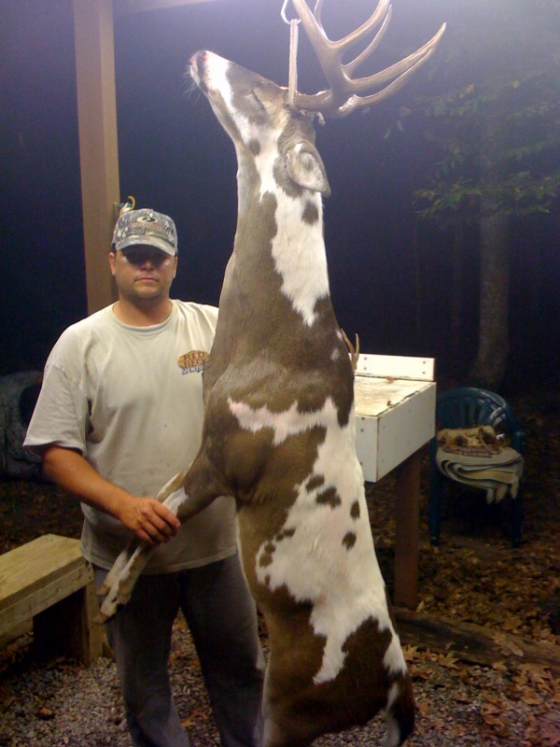



Special thanks to Tim G. for sending me these gems...
Piebald Deer: What are they?
A genetic variation (defect) produces the piebald condition in white-tailed deer, not parasites or diseases. Piebald deer are colored white and brown similar to a pinto pony. Sometimes they appear almost entirely white. In addition to this coloration, many have some of the following observable conditions: bowing of the nose (Roman nose), short legs, arching spine (scoliosis), and short lower jaws. This genetic condition is rare with typically less than one percent of white-tailed deer being affected.
|